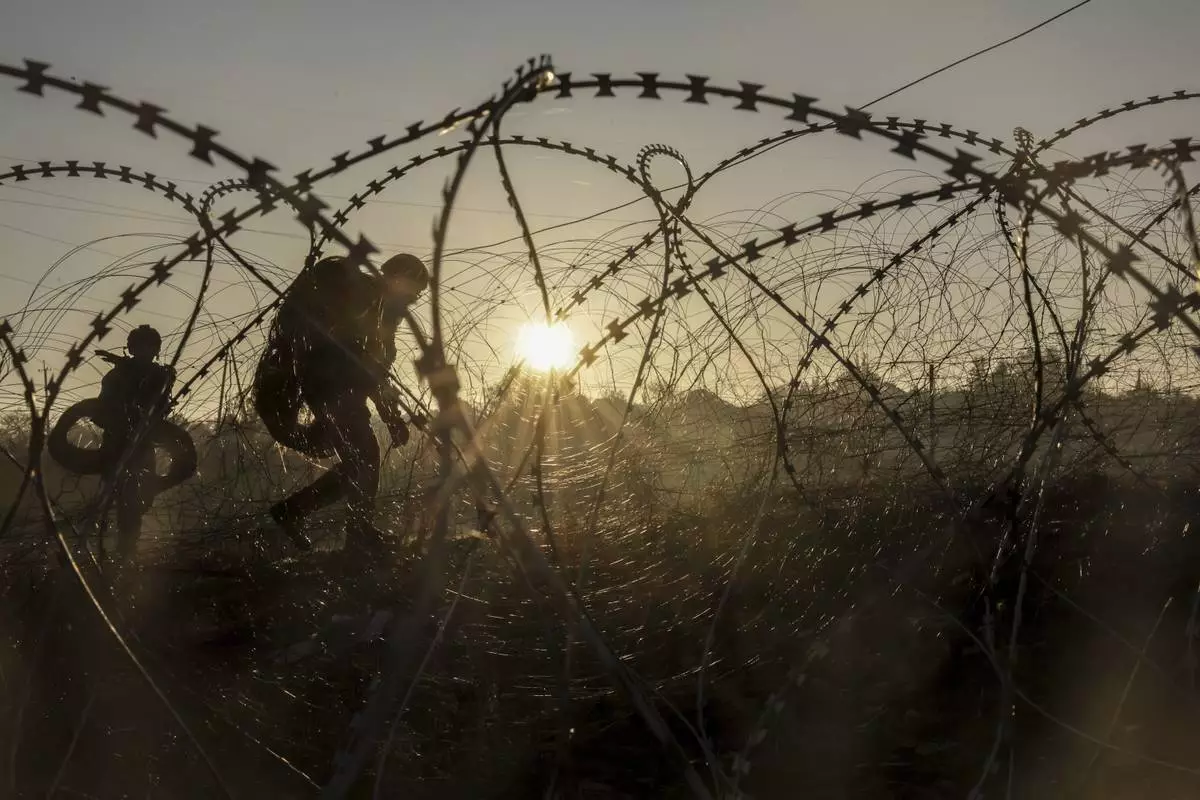PRAGUE (AP) — European nations boosted their defenses in response to the annexation of the Crimea Peninsula in 2014 and Russia’s full-scale invasion of Ukraine in 2022, a London-based think tank said Friday, but much remains to be done for them to be ready to face threats from Russia.
That’s the conclusion of a report released by the International Institute for Strategic Studies released as it opened a three-day gathering in the Czech capital to discuss European and transatlantic military capabilities.
“NATO has not just significantly increased its ambitions regarding its deterrence and war-fighting posture, but European members have sought to address critical capability and readiness shortfalls,” the report said.
“Unsurprisingly, however, after decades of neglect and underinvestment, much remains to be done and progress has been mixed."
It was released as European leaders, including NATO Secretary-General Mark Rutte, were reassessing their trans-Atlantic relations in Budapest, Hungary in the hope that Donald Trump’s second U.S. presidency will avoid the strife of his first administration and maintain a strong common stance on Russia.
Ben Schreer, executive director, IISS-Europe, said that European defense is “at the most critical time” now. “The U.S. election will add even more pressure on European nations to invest more in their own defenses but at the same time considering how to continue to help Ukraine win this war.”
During his election campaign, Trump threatened actions that could have groundbreaking consequences for nations across Europe, from a trade war with the EU to a withdrawal of NATO commitments and a fundamental shift of support for Ukraine in its war with Russia.
During his first 2017-2021 term, Trump pushed NATO's European members to spend more on defense, up to and beyond 2% of gross domestic product, and to be less reliant on U.S. military cover.
In that respect, some progress has been made, with 2024 defense spending by NATO’s European members states 50% higher than it was 10 years ago, the report said.
But problems remain, the IISS said, naming a lack of stability in public financing that “ultimately limits (the defense) industry’s ability to invest with confidence.”
Moreover, “regulatory hurdles and application of environmental, social and governance standards will continue to act as barriers to investment,” it said.
Europe’s defense industry managed to increase output of some products after 2022, especially those with high demand from Ukraine, such as air defense and artillery. But European countries also donated their own weapons to Ukraine, including F-16 fighter jets, and “remain dependent on the U.S. for some important aspects of their military capability,” looking also to Brazil, Israel and South Korea to meet their needs due to a lack of their production capacity.
Competition with civilian industries for raw materials and skilled professionals makes things harder for the defense industry, the report said.
It also warned that many European armies don’t have enough military personnel. A lesson learned from Russia’s war against Ukraine is “that countries need significant troops to engage with and defeat enemy attack, but also enough forces to regenerate after combat attrition."
By that standard, “key European armed forces remain under-strength.”
Europeans have a long way to go to renovate their defense capabilities, the report said.
“Forces, budgets and defense-industrial capacities were reduced because of political decisions by governments. These same governments now need to rediscover the ‘muscle memory’ of defense and security, ensuring sustained policy attention and investment to meet the new strategic realities in Europe.”

FILE - In this photo provided by Ukraine's 24th Mechanised Brigade press service, servicemen of the 24th Mechanised Brigade install anti-tank landmines and non explosive obstacles along the front line near Chasiv Yar town in Donetsk region, Ukraine, Wednesday Oct. 30, 2024. (Oleg Petrasiuk/Ukrainian 24th Mechanised Brigade via AP, File)

FILE - A Ukrainian serviceman of the Bugskiy Gard unit prepares a 120mm mortar before firing towards Russian positions on the front line, in the Kherson region, Ukraine, Sunday, Nov. 3, 2024. (AP Photo/Marko Ivkov, File)

FILE - A serviceman of the 13th Brigade of the National Guard of Ukraine fires Giatsint-B gun towards Russian positions near Kharkiv, Ukraine, Wednesday, Nov. 6, 2024. (AP Photo/Efrem Lukatsky, File)










